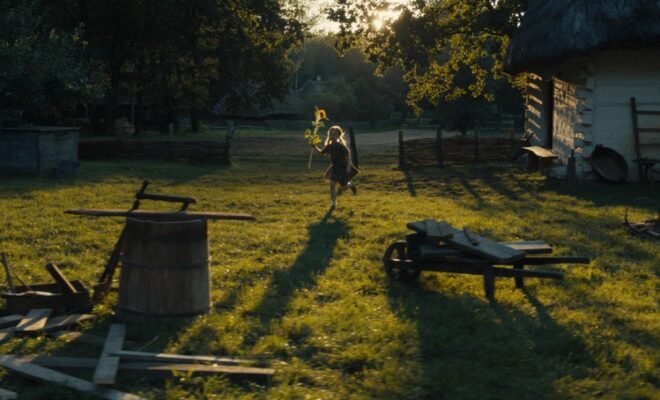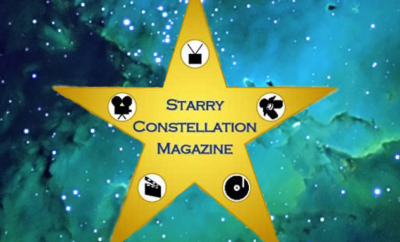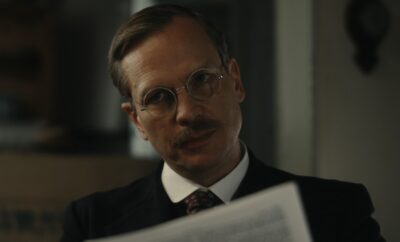 Sounds Better Productions
Sounds Better Productions
Interviews
Mateusz Balcerek – Sunflower
By: Lisa Steinberg
Q) This is an incredibly moving story inspired by the life of Danuta Górecka. What was it about her experiences that moved you to create Sunflower?
A) What struck me most about my grandmother Danuta Górecka’s stories wasn’t just the hardship of surviving war, but the quiet strength of the women in her family—three generations navigating an unimaginable reality with resilience, love and determination. It became clear to me that this wasn’t just her story; it was a universal tale of women’s perseverance, one that resonates powerfully in today’s world, especially amidst ongoing political conflicts.
These are the stories that history often forgets—the ones told around kitchen tables rather than inscribed in textbooks. And yet, they’re the stories that shape us, as relevant today as they were eighty years ago. I felt compelled to tell this story now, to remind us of the need to protect the vulnerable and the importance of holding onto the light, no matter how overwhelming the darkness may seem.
Q) The film is set in 1944. Where was the movie shot in order to bring that timeline to life?
A) We shot Sunflower in the Radom Countryside Museum, which was the most authentic location we found. Our DP, Łukasz Dziedzic, and I visited many similar open-air museums across Poland, but this one stood out. When I saw the house with its two small windows that looked like eyes, I knew instantly it was the one! The museum’s attention to historical detail and the preserved architecture perfectly captured the rural life of the 1940s, grounding the story in a sense of time and place. It felt like stepping into the past, which brought an incredible depth to the film.
Q) How involved were you in the casting of the film?
A) Casting Sunflower as like piecing together a living photograph of my grandmother’s memories. I worked closely with our casting director, Kacper Kowalski—whose track record includes casting Polish Netflix originals—to find actors who could bring authenticity and depth to the story. We even referenced my grandmother’s old photos from the 1940s, using them as a visual compass to ground our choices in history while ensuring the characters felt vividly alive.
Martyna Zozula, who plays young Danuta, stood out immediately. Her ability to grasp the depth of such a complex role at her age was nothing short of remarkable. Sylwia Boroń and Helena Mazur, playing Danuta’s mother and sister, brought such layers to their performances that they felt like family from the start. Every actor didn’t just play their role; they lived it, making casting a deeply fulfilling part of the process—proof that sometimes, the past chooses the present as much as we choose the cast.
Q) What challenges arose for you while filming that were unexpected?
A) One of the biggest challenges was navigating a truly global production process. Our music was composed in Italy, recorded by the Guildhall London Symphony Orchestra and the London Music Centre Kids Choir in London. Animation and sound design were handled in LA, while foley was recorded in Łódź, Poland. Editing took place between Poland and the US and post-production wrapped in Warsaw. Coordinating across so many locations, languages and time zones was a monumental task—both logistically and creatively.
Language barriers added another layer of complexity. For instance, our producer Pinar Binay was the only person on set in Poland who didn’t speak Polish. Watching her navigate that challenge with grace and humor reminded me how universal passion for storytelling can be. While this process was demanding and time-consuming, it brought incredible perspectives and talents together.
Q) Which scenes are you most proud of going from page to screen?
A) There’s a scene in the church where young Danuta tells the priest, “Grandpa says I’m like the Virgin Mary because she loves sunflowers, just like me.” It’s one of those moments that captures the fragile innocence of childhood amidst chaos. Seeing it come alive on screen, with Martyna’s performance, the soft light streaming through the church windows and the subtle song involving a kids choir felt like magic. It’s a quiet but profound moment and, for me, it encapsulates everything Sunflower stands for.
Q) The subject matter is from a dark time in history. How did you help bring levity to the set during filming?
A) We were very intentional about creating a safe and supportive environment, especially for Martyna, our young lead. She was never exposed to scenes that were too intense or inappropriate for her age. For example, we shot her closeups separately and ensured she wasn’t present during heavier moments, like the grandfather’s murder scene. Protecting her innocence while still capturing the depth of her performance was a priority for everyone on set.
At the same time, the crew’s dedication to telling this powerful story brought its own kind of levity. The shared investment in a narrative so deeply connected to Polish history and families created a palpable sense of purpose. It was a story close to many of our hearts, and that connection made even the hardest days easier to navigate. There was this collective understanding that we were honoring something larger than ourselves and that energy kept the set both focused and uplifting.
Q) What do you hope lingers with audiences that watch Sunflower—either as an emotion or message?
A) I want audiences to walk away reflecting on the fragility of innocence in times of conflict and the strength of family bonds. At its heart, Sunflower is about resilience—how even in the darkest moments, light can find a way to shine through. It’s a tribute to those quiet heroes of history whose stories aren’t always told. I hope viewers feel inspired to cherish their own family histories and to see hope as something worth protecting, no matter the circumstances.
Q) The film has qualified for the 2025 Oscars. What does this accomplishment mean to you?
A) An Oscar is probably the ultimate dream for any filmmaker and I’m no exception. Funny enough, the very first souvenir I ever bought on my first visit to LA was a tiny Oscar statue on the Walk of Fame. So, to have Sunflower qualify for the real thing feels surreal and deeply nostalgic—a little dream turned into something far more meaningful.
But beyond personal significance, this recognition is about sharing my grandmother’s story with as many people as possible. That’s what matters most to me—that her resilience and our collective history can reach audiences all over the world. It’s an incredible honor and, at the same time, a huge motivation to keep going and tell even more stories that need to be heard.
Q) With this being a short film, are there any plans or thoughts on expanding this to a full-length movie?
A) Absolutely. Sunflower was always the seed of a larger story. The short allowed us to introduce the characters and themes, but there’s so much more to explore—deeper relationships, richer historical layers and a more expansive blend of realism and fantasy. The feature script is already in development and I’m excited to bring this full vision to life and take audiences even further into this world.
Q) What are the other recent projects that you have been busy working on?
A) In addition to developing Sunflower as a feature, I’m working on Club 27, a YA supernatural drama that dives into fame, mental health and societal pressures. At Sounds Better Productions, I’m also expanding our unscripted TV slate with new formats and collaborating with major brands to blend entertainment and storytelling in branded content. It’s an exciting time and I thrive on the challenge of juggling these creative projects while always pushing for something fresh and meaningful.





You must be logged in to post a comment Login